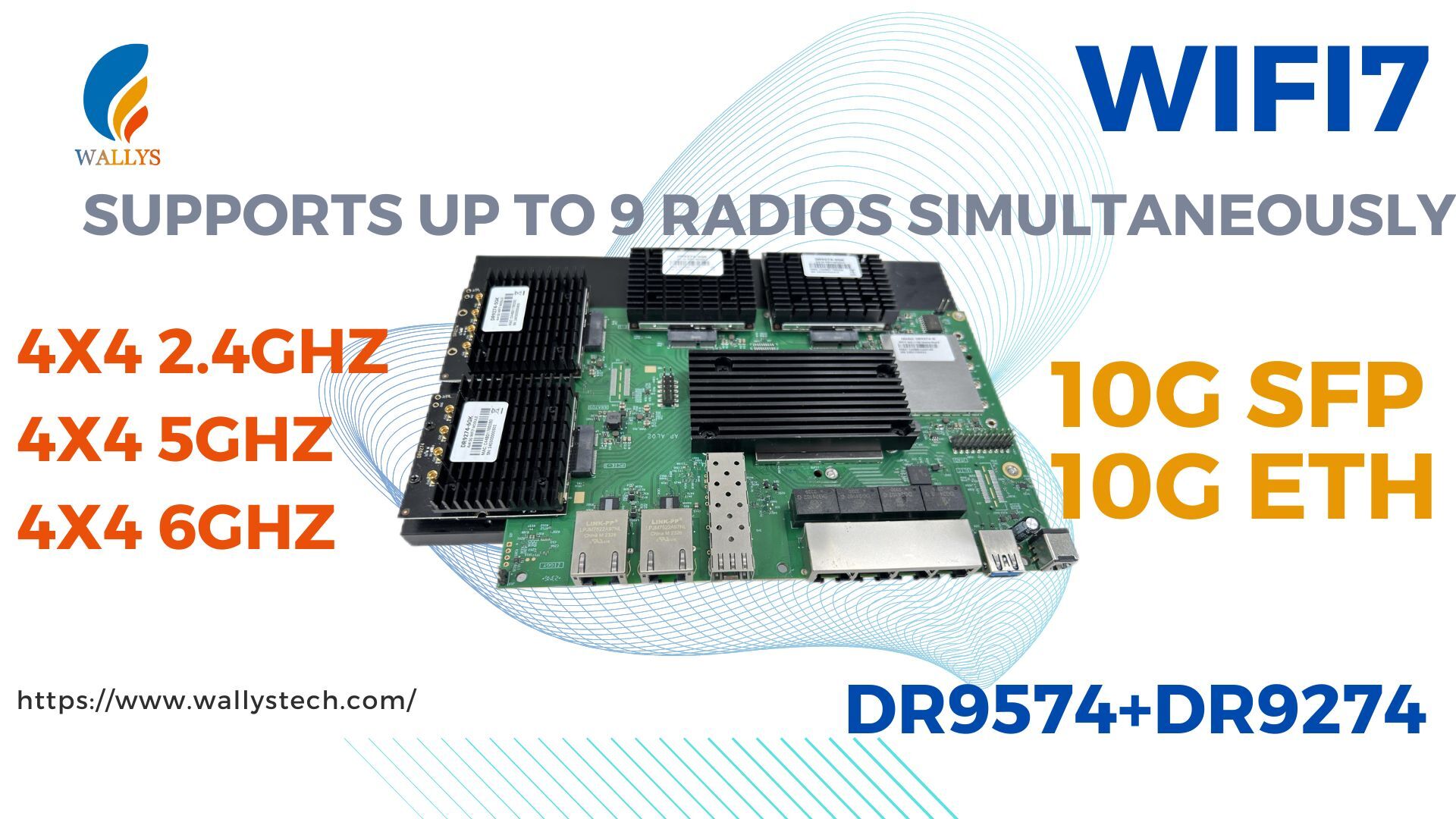WiFi7 IIOT Solution|IPQ9574 with QCN9274 Supports Up to 9 Radios Simultaneously What does it brings?

What does it brings?
Imagine a scenario where an industrial-grade WiFi access point (AP) equipped with the capability to operate nine physical radios simultaneously is deployed across logistics, warehousing, ports, industries, and smart cities. Here's what could happen:
1.Logistics Centers: In logistics centers, these APs could enable real-time tracking and management of goods. Each physical radio could connect to different sensors and devices, monitoring the location, temperature, humidity, and other information of goods. This data could be transmitted to a central control center over the network, enabling precise monitoring and management of logistics operations.
2.Warehousing Facilities: In warehousing facilities, these APs could optimize inventory management and goods allocation. Each physical radio could connect to different shelves or storage areas, synchronizing inventory information in real-time with warehouse management systems, improving inventory turnover rates, and operational efficiency.
3.Ports and Logistics Parks: In ports and logistics parks, these APs could facilitate real-time monitoring and dispatching of ships, containers, and transportation vehicles. Each physical radio could connect to different devices such as security cameras, sensors, and onboard equipment, transmitting data to a monitoring center over the network, ensuring the safe transport and efficient handling of goods.
4.Industrial Production: In industrial production, these APs could optimize the operation of production lines and equipment monitoring. Each physical radio could connect to different production equipment and sensors, transmitting equipment status and production data in real-time to production management systems, enabling automation and intelligence in the production process.
5.Smart Cities: In smart cities, these APs could enable intelligent management of city infrastructure and public services. Each physical radio could connect to different city facilities and sensors, monitoring information such as traffic flow, environmental pollution, energy consumption, and transmitting data to city operation centers over the network, enabling efficient utilization of city resources and sustainable development of the environment.
In summary, deploying an industrial-grade WiFi access point with nine physical radios across logistics, warehousing, ports, industries, and smart cities could lead to more efficient operations, smarter manufacturing, and intelligent city management.
In industrial Application
Configuring all nine radios as access points (APs) can bring several benefits:
1.Increased Device Connectivity: Industrial environments often require connectivity for numerous devices such as machinery, sensors, monitoring equipment, and mobile terminals. By utilizing nine APs, the network can accommodate a larger number of devices simultaneously, facilitating seamless communication and data exchange across various equipment and systems.
2.Enhanced Coverage and Reliability: Industrial facilities often have complex layouts and challenging environments, such as large warehouses, manufacturing floors, or outdoor areas. With multiple APs strategically deployed, the network coverage is extended, ensuring that devices throughout the facility can maintain a reliable connection with minimal dead zones or signal interference.
3.Load Balancing and Traffic Management: Distributing client connections across multiple APs allows for efficient load balancing and traffic management. This helps prevent network congestion and ensures that critical applications or devices receive sufficient bandwidth and priority access to resources, optimizing overall network performance.
4.Redundancy and Fault Tolerance: In industrial applications where uninterrupted operation is crucial, having redundant APs can provide fault tolerance and resilience against network failures. If one AP experiences issues or downtime, nearby devices can seamlessly connect to alternate APs, minimizing disruptions to critical operations.
5.Support for Mobile and IoT Devices: Many industrial processes rely on mobile terminals or IoT devices for data collection, monitoring, and control. With nine APs, the network can accommodate the growing number of wireless devices used in industrial automation, asset tracking, inventory management, and predictive maintenance applications.
Overall, configuring nine radios as APs in industrial environments enhances connectivity, coverage, reliability, and scalability, supporting the demanding requirements of modern industrial operations.
A Quick Overview for Wallys WiFi7
1. DR9274-QCN9274|QCN6274 WiFi7 Single Band 5G
2. DR9274-QCN9274|QCN6274 WiFi7 Single Band 6G
3. DR9274-QCN9274|QCN6274 WiFi7 Dual Band Dual Concurrent-2.4G&5G
4. DR9274-QCN9274|QCN6274 WiFi7 Dual Band Dual Concurrent-5G&6G
5. WiFi7 Platform DR9574
Inquiries:
Wallys is dedicated to continuous innovation, constantly pushing the boundaries of WiFi technology. In addition to its hardware products, Wallys also offers a range of ODM/OEM services, including:
Customization: Wallys can customize its WiFi 6 products and embedded boards to meet the specific needs of its customers.
Engineering support
Testing and certification
For inquiries or to discuss your specific requirements, please contact our dedicated sales team atsales1@wallystech.com.
Wallys - Empowering Connectivity, Driving Innovation.








评论